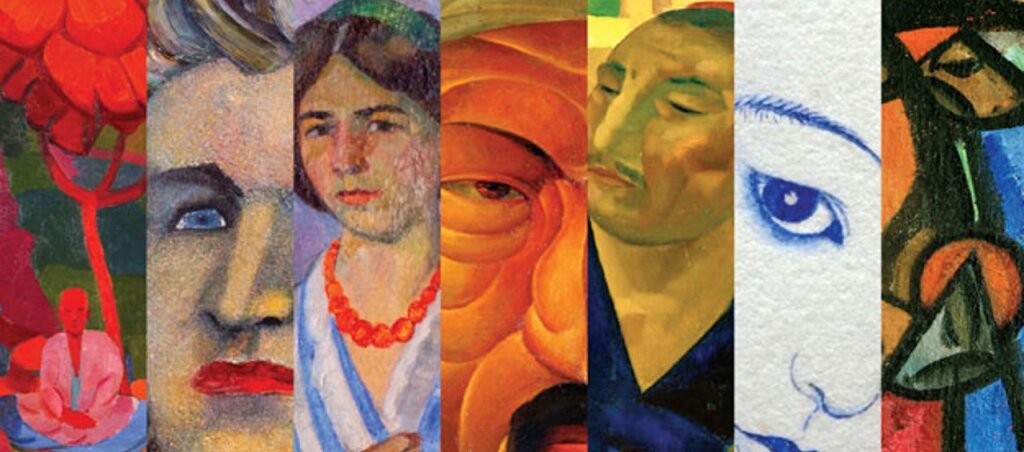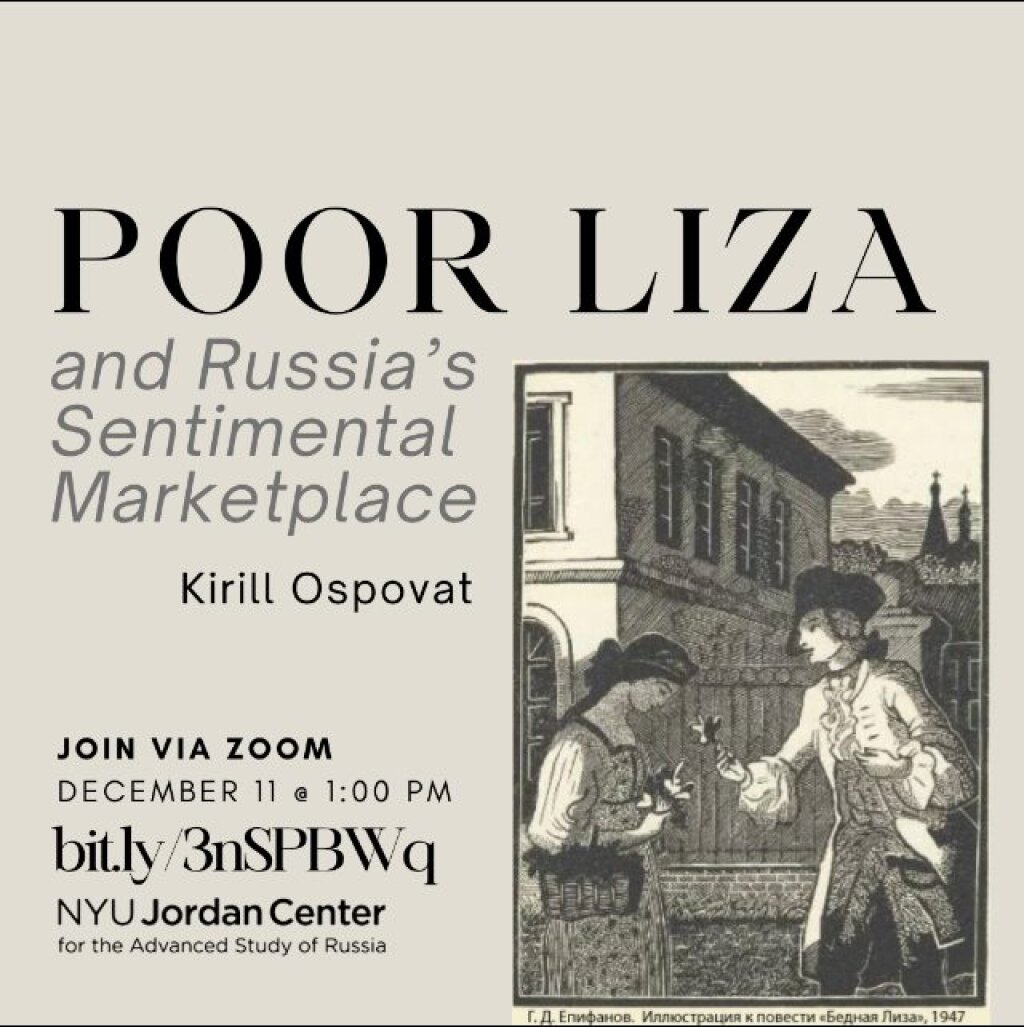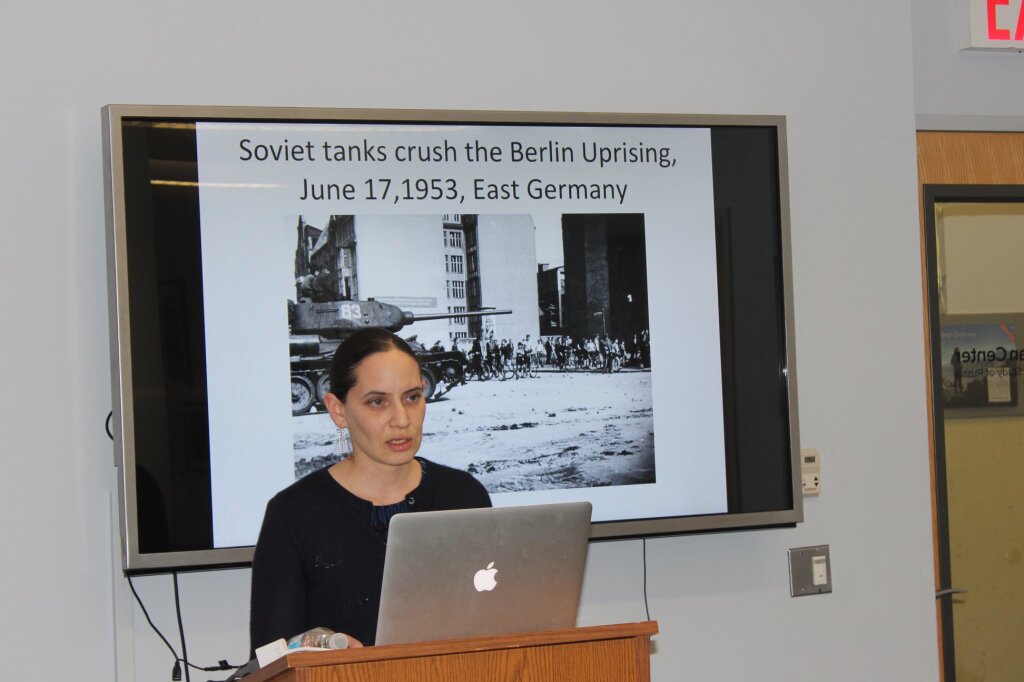On December 4, 2020, Jordan Center for Advanced Study of Russia hosted Zukhra Kasimova, a PhD candidate in the History Department at the University of Illinois at Chicago. Kasimova was introduced by Rossen Djagalov, Assistant Professor of Russian Slavic Studies at New York University. Kasimova spoke about Igor Savitsky’s creation of “the second largest collection of Russian modernist art in the world.” The Museum is a unique collection of Karakalpak applied folk art and works of the Russian and Soviet avant-garde located in Nukus, which is approximately 800 kilometers away and a 15-hour train ride from the Uzbek capital Tashkent. Stream it here.
Igor Savitsky, the Polish-Jewish painter, archeologist and collector from Kiev, founded the State Art Museum of the Republic of Karakalpakstan in 1966. Most famously known as the Savitsky Museum, it houses a unique and eclectic collection of Russian avant-garde art, Karakalpak authentic primitive art, and ancient Karakalpak artifacts. For this reason, Igor Savitsky became known as the “Tret’iakov of Central Asia,” and his museum as the “Louvre of the steppes.”
Zukhra Kasimova began her lecture by debunking these tropes in the popular imagination of the museum. “[They are] blatantly orientalizing and meaningless, [serving only] to replace the lack of information in the lack of access to the archival documents,” said Kasimova. Instead, Kasimova explored the complex, hybrid nature of the museum by situating it in the creative context of Soviet nation building since the 1920s. Both the Russian avant-garde art and the ancient Karakalpak artifacts, despite their dissimilarities, were essential parts to a greater whole.
Kasimova called for a reconstruction of a new genealogy for the Igor Savitsky Museum. After the collapse of Soviet Union, the Museum gained international fame, but most of the published articles spoke about, of course, the Russian avant-garde portion of the collections. Among the numerous documentary films made about Savitsky, similarly, most focused on Savitsky as the sole creator of the extravagant museum. Kasimova, however, shed light on the importance of restoring the roles of not only Savitsky himself, but also the Karakalpak natives who worked alongside him, and their opponents in the capital of the Uzbek republic in Tashkent.
Kasimova brought our attention to the idiosyncratic locale of Nukus. In Zavitsky’s own words:
...the problems of Nukus scare people away, for everyone considers Nukus a hole-in-the-wall, a place in the middle of nowhere. However, it is not so, because, for one, only in Nukus was it possible to create such an improbable museum, the one impossible to build elsewhere.
Originally a very provincial town named after the Karakalpak clan, Nukus became the capital city of the Karakalpak Autonomous Soviet Republic in 1932. It also became the place where the artist, ethnographer, and art collector Savitsky spent 30 years in total to socialize into the Central Asian cultural and academic circles.
Kasimova attributed Savitsky’s motivation for housing an extensive collection of art to his early-day passion for artistic creation, which, along with the avant-garde tradition, was later outlawed and replaced by the socialist realism canons in the 1930s. His subsequent war-time evacuation to Central Asia opened the doors to a new source of artistic inspiration -- just as oriental bazaars, architectural monuments, colorful clothes of the locals had once inspired the avant-garde artist of the 1920s in the same way. Savitsky befriended Marat Nurmukhamedov and many other Turkic ethnographers among the local intelligentsia, who wrote about the Karakalpaks as not merely a small ethnic group in an autonomous region -- but actually a nation in itself.
“As an educated first-generation Soviet academic from Karakalpak, [Nurmukhamedov] saw the opportunity to elevate the status of Karakalpak by claiming that they do have a culture, which is very specific and distinct in its own rights,” said Kasimova.
Meanwhile, Savitsky aspired to help further materialize the unique specificity of Karakalpak art by envisioning, alongside Nurmukhamedov and local Karakalpak elites, a bold project of Karakalpak nation building akin to the Soviet indigenization policies [korenizatsia] of the 1920s.
“But, of course, a large difference between their effort and the very top-down indigenization policies, executed in Moscow in the 1920s, was that Nurmukhamedov and Savitsky this time truly built a grassroots movement for the Turkic locals themselves,” stressed Kasimova. With an ambition to represent cultural politics on behalf of the Karakalpak nation, Nurmukhamedov and Savitsky’s project presented a drastic contrast to the post-war socialist realist dogmas.
And this is how the history of Karakalpak art entangled with that of the Russian avant-garde: They both constitute unique tendencies that grew under the radar of official Soviet culture.
Kasimova later proceeded to explain how Savitsky was able to create a new state museum and how his unorthodox museum has successfully lasted to this day, despite the negative attitude of Soviet authorities towards the avant-garde. The talk also revealed how the funding was secured, even when the central government was watchfully controlling the already tight financial resources allotted to cultural institutions.
During the Q&A, Kasimova answered questions regarding the Turkistani avant-garde, which refers to the Russian artists who left for Central Asia in the 1920s. It was then followed by a vibrant conversation that addressed the art collections and exchange within the former Soviet world, access to archives, archaeology, and museum conservation.



